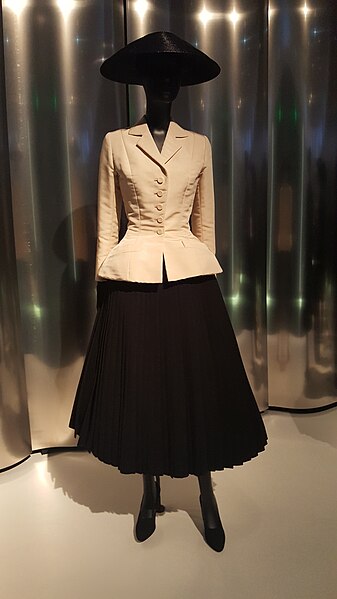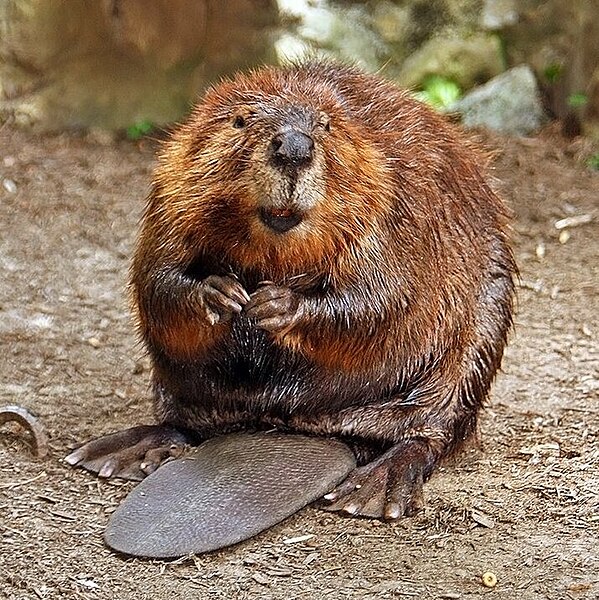From quirky traditions to extreme rituals, some festivals around the world go beyond the usual celebrations. These unique events often reflect a deep connection to local history, cultural beliefs, or natural resources, creating experiences you won’t find anywhere else. While some festivals involve thrilling feats or unexpected themes, others are simply a way for communities to gather and celebrate in unconventional ways. Whether it’s throwing tomatoes in Spain or freezing hair in Canada, each festival brings its own flavor of joy, community, and sometimes even chaos.
La Tomatina – Buñol, Spain
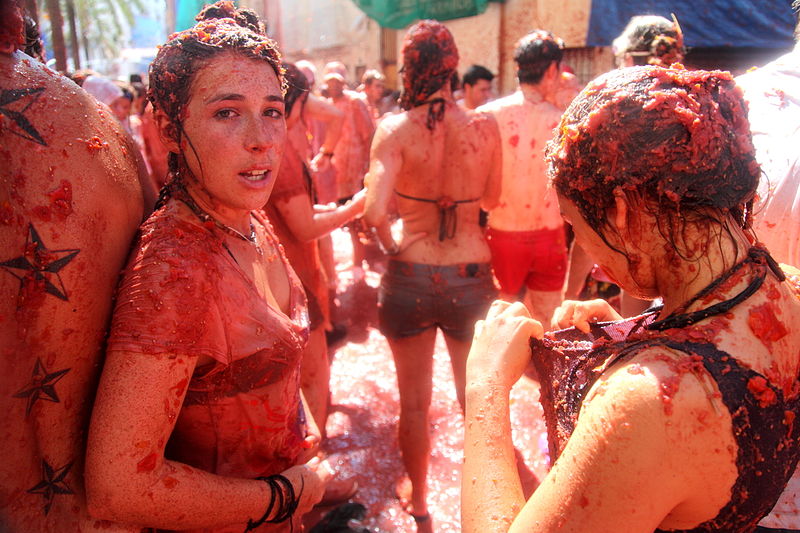
La Tomatina is a chaotic, tomato-throwing festival held annually in Buñol, Spain. In late August, thousands gather on the streets to hurl ripe tomatoes at one another in a massive food fight. The tradition dates back to the 1940s, though its exact origins remain a mystery, possibly rooted in local protests. For one hour, participants drench each other in red pulp, covering the town in tomato juice. To ensure safety, tomatoes are softened beforehand, reducing the risk of injury. After the battle, fire trucks spray down the streets, leaving Buñol cleaner than before. Locals and tourists alike relish the chance to engage in this colorful, messy fun.
Night of the Radishes – Oaxaca, Mexico
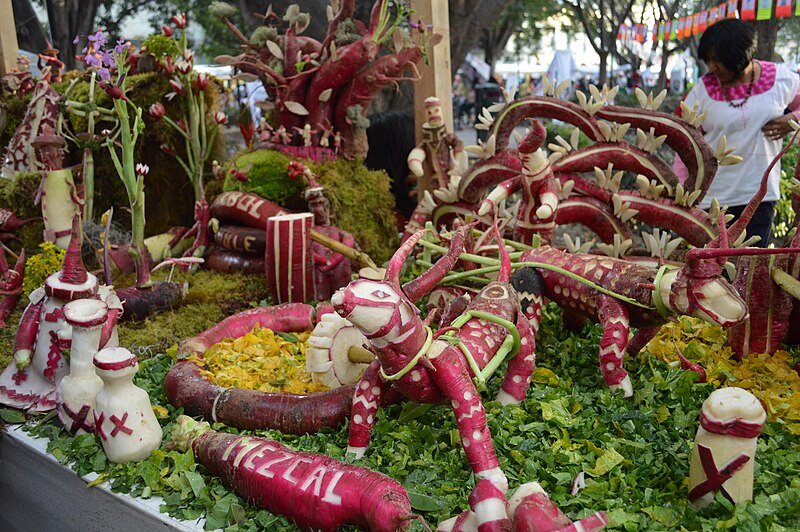
Every December, Oaxaca, Mexico, hosts the Night of the Radishes, a festival where artisans carve radishes into intricate scenes. This quirky event, which takes place just before Christmas, began as a way for farmers to showcase their produce. Radishes are crafted into religious motifs, nativity scenes, and even famous characters, drawing crowds from around the region. Each radish carving tells a story, some humorous and others deeply traditional, capturing Mexican culture in miniature. The event lasts just one night, with winners announced for the best designs. The festival is short-lived, as radishes quickly wilt, adding a fleeting beauty to the art. Night of the Radishes uniquely combines agricultural pride with artistic expression.
Kanamara Matsuri – Kawasaki, Japan

Kanamara Matsuri, or the Festival of the Steel Phallus, is held in Kawasaki, Japan, and is dedicated to fertility, health, and prosperity. Celebrated each spring, the festival features giant phallus-shaped statues, floats, and sweets, attracting visitors from around the world. Rooted in Shinto beliefs, it honors the protective powers associated with reproductive health. Participants parade through the streets with elaborate phallic sculptures, celebrating new life and safe births. Local shops sell themed snacks and souvenirs, including candies shaped like phallic symbols. Despite its unusual theme, Kanamara Matsuri is a family-friendly event, with visitors of all ages joining in the festivities. It’s a fascinating display of Japanese openness to traditionally taboo subjects.
Up Helly Aa – Shetland, Scotland

The Scottish town of Shetland celebrates Up Helly Aa each January with fiery festivities that honor Viking heritage. Participants don traditional Viking costumes and light up the dark winter night with torches. The main event is the burning of a longship replica, a symbolic gesture of Viking valor and culture. Viking squads, or “jarl squads,” march through town, singing songs and displaying authentic Norse weaponry. Following the burn, the night continues with dancing, feasting, and celebrating Nordic roots. This tribute to Shetland’s history and Viking ancestry has been a local tradition for over a century. Up Helly Aa is an unforgettable blend of heritage and spectacle.
Cooper’s Hill Cheese-Rolling – Gloucester, England
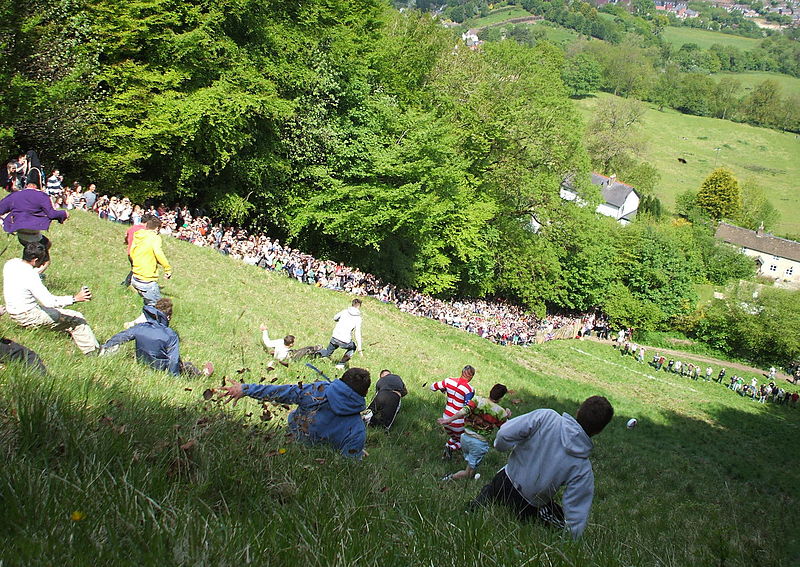
Each spring, participants gather at Cooper’s Hill in Gloucester, England, for the world-famous cheese-rolling festival. A large wheel of Double Gloucester cheese is rolled down a steep hill, with competitors racing after it at high speeds. The hill’s slope is treacherous, and many tumble down in their pursuit, often sustaining minor injuries. This age-old tradition has gained international fame for its bizarre yet thrilling nature. While the cheese always reaches the bottom first, the “winner” is the person who reaches it the fastest. Spectators enjoy the daring spectacle as much as the racers. Cooper’s Hill Cheese-Rolling is a wild and quirky tribute to English eccentricity.
Mud Festival – Boryeong, South Korea
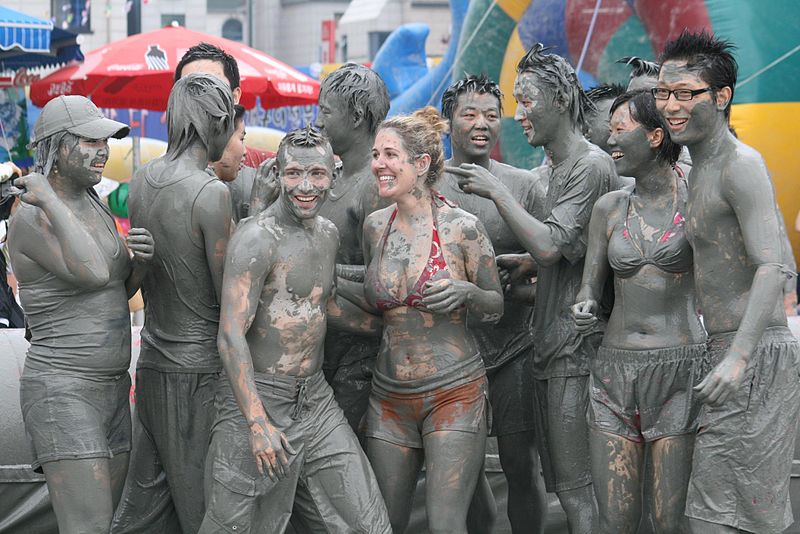
The Boryeong Mud Festival, held in July in South Korea, is a lively celebration of mud and its supposed skincare benefits. Initially created to promote Boryeong’s mineral-rich mud, the festival now attracts locals and tourists who revel in mud wrestling, sliding, and body painting. The event features mud-based activities, including obstacle courses and even mud baths. Beyond the mess, the festival also offers live music, parades, and fireworks to keep the energy high. Attendees get covered from head to toe in mud, embracing the therapeutic properties of the soil. It’s a day to let loose, laugh, and enjoy a unique form of self-care. Boryeong Mud Festival combines wellness with exhilarating fun.
Golden Shears Sheep Shearing – Masterton, New Zealand
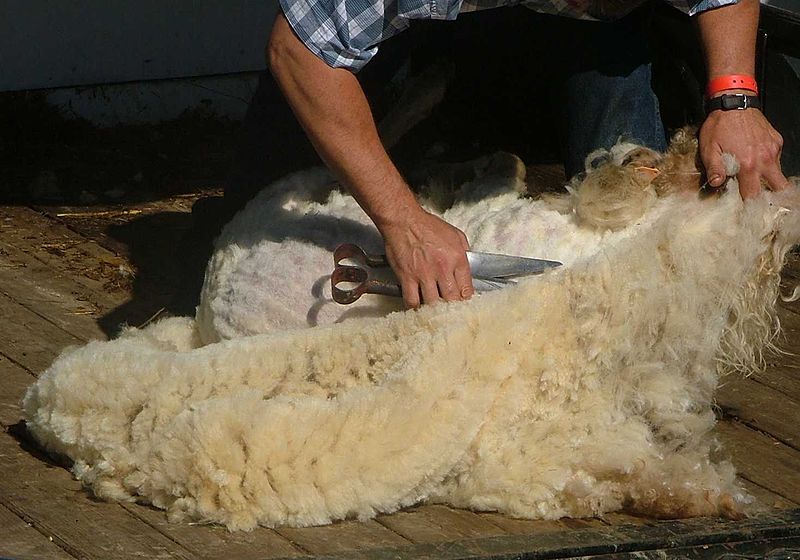
In Masterton, New Zealand, the Golden Shears Sheep Shearing festival celebrates the country’s strong agricultural heritage and shearing expertise. This annual event in March draws skilled shearers from around the world who compete to shear sheep with speed and precision. The competition tests not only swiftness but also accuracy, with penalties for mistakes in shearing. Spectators are fascinated by the shearers’ dexterity and the rhythm of the shears as they work. There are additional events, including wool handling and pressing contests, showcasing the industry’s various skills. The festival underscores New Zealand’s importance in the wool industry and the cultural significance of shearing. Golden Shears Sheep Shearing is a testament to tradition and skill.
Baby Jumping Festival – Castrillo de Murcia, Spain
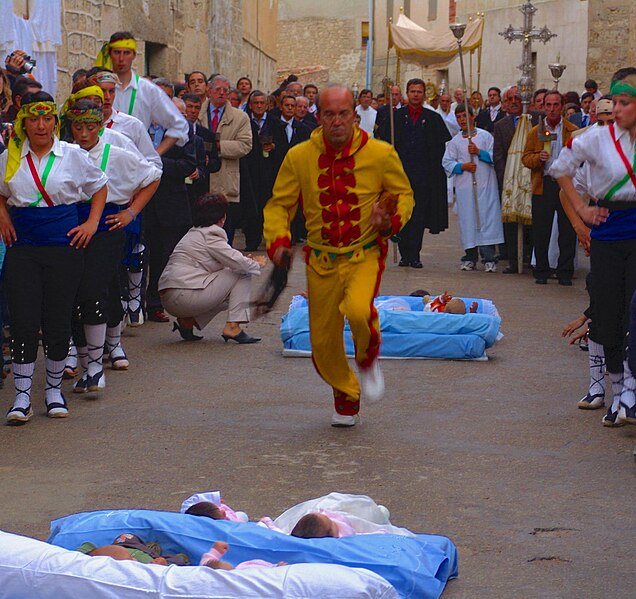
Spain’s Baby Jumping Festival, or El Colacho, takes place in Castrillo de Murcia and dates back to the 17th century. During the festival, men dressed as devils leap over mattresses lined with babies born in the past year. This unusual ritual is believed to cleanse the infants of original sin and protect them from evil spirits. The “devils” wear colorful costumes and masks, adding to the surreal nature of the event. Though it appears dangerous, safety measures are in place, and no accidents have occurred. The festival is part of the Catholic feast of Corpus Christi and includes parades and other rituals. Baby Jumping Festival is one of the most unique religious traditions in Spain.
Takanakuy Festival – Chumbivilcas, Peru
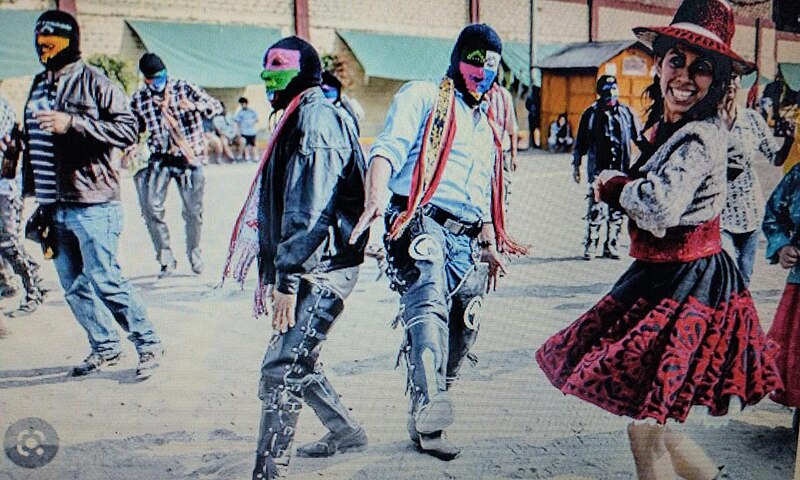
Takanakuy is a Christmas celebration in Chumbivilcas, Peru, where community members settle disputes through organized fistfights. It’s a time to resolve grievances before the New Year, promoting a fresh start for everyone involved. Participants of all ages fight in a controlled environment, with the community cheering them on. After the fights, victors and defeated alike embrace, symbolizing forgiveness and unity. The festival also features traditional music, dancing, and parades, adding a festive atmosphere to the day. Takanakuy is as much about community healing as it is about releasing tension. This unconventional tradition is a bold way of ending the year on a reconciliatory note.
Entroido – Laza, Spain
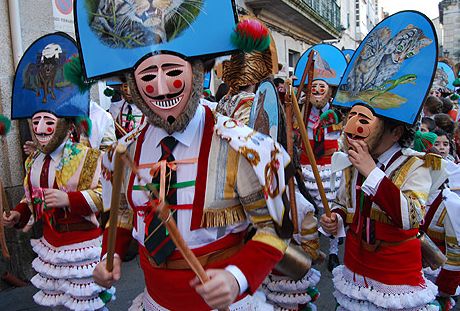
Entroido is Spain’s unique take on Carnival, celebrated in Laza with a focus on mischief, mud, and fiery rituals. Villagers cover themselves in mud, and some even throw muddy rags at each other as part of the festivities. One of the most bizarre elements is the “Peliqueiros,” or masked figures in colorful costumes, who chase people with whips. Another tradition involves ants mixed with vinegar, which participants throw to add to the chaos. It’s an event where locals and visitors alike embrace the wild and untamed side of Spanish culture. Dancing and music accompany the strange rituals, enhancing the carnival spirit. Entroida is a blend of ancient customs and modern fun.
Thaipusam – Tamil Nadu, India & Southeast Asia
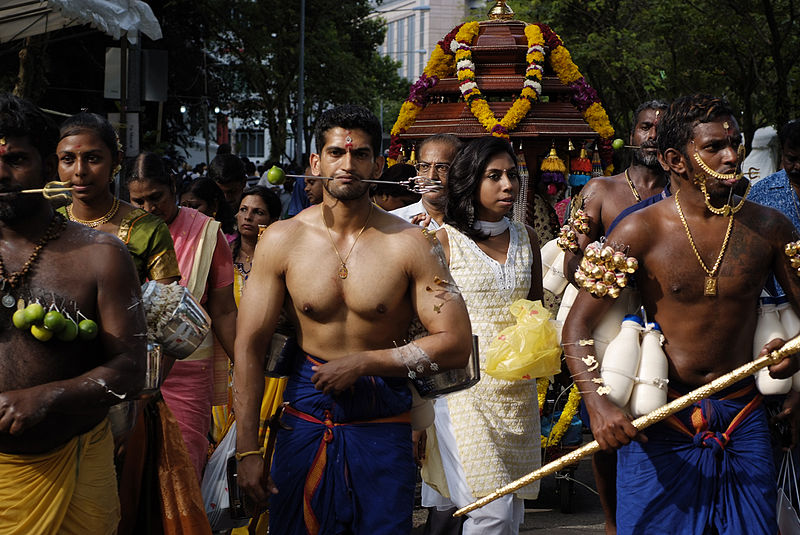
Thaipusam is a Hindu festival celebrated primarily in Tamil Nadu, India, and parts of Southeast Asia, known for its intense and devotional rituals. Participants often carry large, ornate structures called “kavadis” attached to their bodies with hooks, while some pierce their skin, tongue, or cheeks as an act of penance. The festival honors the god Murugan, symbolizing the triumph of good over evil. Pilgrims walk long distances in processions, chanting and drumming along the way. Despite the extreme practices, Thaipusam is deeply spiritual, with devotees fasting and praying before the festival. It’s a test of endurance and faith, where the faithful believe the acts will bring blessings. Thaipusam captivates onlookers with its mixture of color, devotion, and resilience.
Battle of the Oranges – Ivrea, Italy

In Ivrea, Italy, the Battle of the Oranges is a massive food fight that reenacts a historic rebellion. Participants divide into teams representing medieval townsfolk who fought against an oppressive tyrant. They hurl oranges at each other, symbolizing the townspeople’s resistance against unjust rule. The oranges, once a luxury item, represent the freedom and defiance of the citizens. The event has become a lively, if slightly chaotic, celebration of Ivrea’s spirit and history. Wearing protective gear, the “battle” participants are as enthusiastic as they are respectful of tradition. The streets are left covered in orange pulp, a vivid reminder of Ivrea’s rebellious past. It’s a festival that celebrates freedom and the community’s heritage.
Crying Baby Sumo Festival – Tokyo, Japan
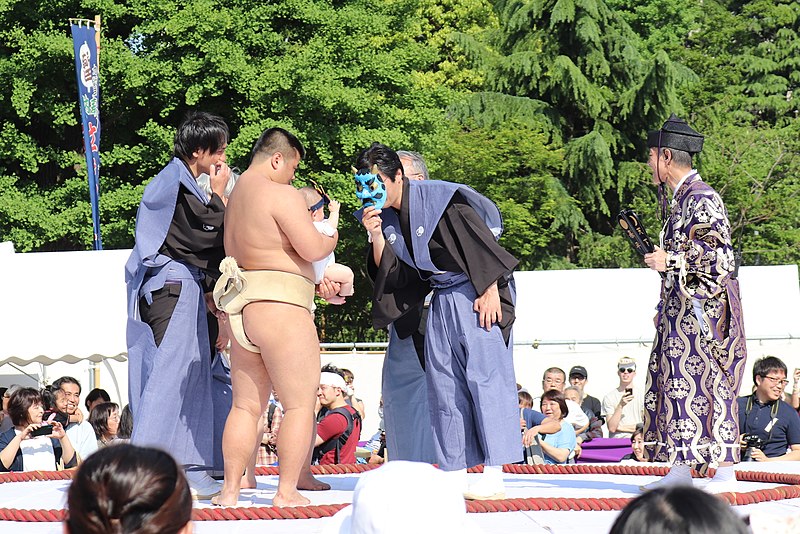
Tokyo’s Crying Baby Sumo Festival is a lighthearted event where sumo wrestlers try to make babies cry, as it’s believed that a crying baby wards off evil spirits. Babies, held by wrestlers dressed in traditional attire, face each other in a ring while their parents cheer them on. The wrestlers make funny faces, noises, and gentle jostles to coax out tears, with the first baby to cry considered the winner. The festival follows an ancient belief that crying helps infants grow stronger. Despite the unusual objective, the event is conducted with care, ensuring the babies are safe and comfortable. The crowd laughs as babies respond to the sumo wrestlers’ antics. Crying Baby Sumo Festival is a charming take on traditional superstitions.
Monkey Buffet Festival – Lopburi, Thailand
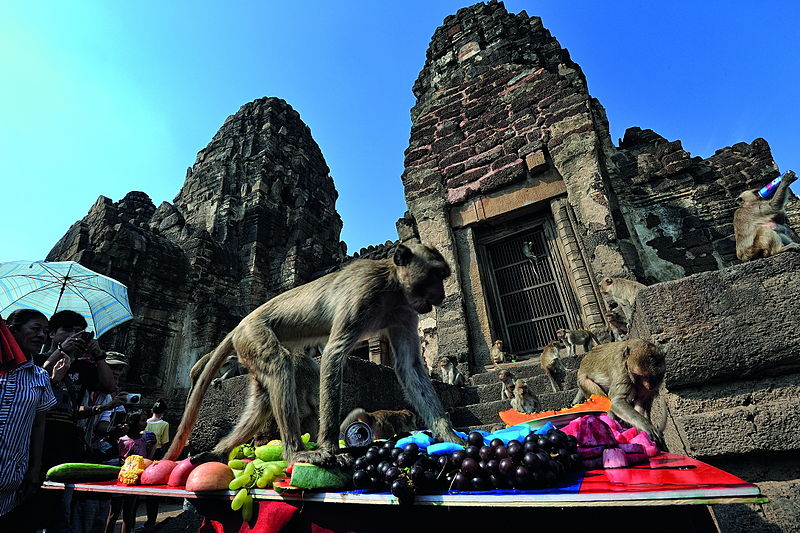
In Lopburi, Thailand, monkeys are the guests of honor at the annual Monkey Buffet Festival, a feast held to thank them for attracting tourists to the area. Large tables are set with fruits, vegetables, and treats specifically for the monkeys, who eagerly indulge in the feast. Thousands of macaques descend on the town center, feasting on their lavish spread, much to the delight of onlookers. The festival is a show of respect for the monkeys, who are considered sacred in local culture. Colorful decorations and statues of monkeys add to the festive atmosphere. The event also brings good luck, according to local beliefs, as well as joy to locals and tourists alike. The Monkey Buffet Festival highlights Thailand’s unique blend of reverence and playfulness.
Hadaka Matsuri – Okayama, Japan

Hadaka Matsuri, or the “Naked Festival,” is held every February in Okayama, Japan, where thousands of men clad only in loincloths compete to grab sacred sticks for good luck. Participants brave freezing winter temperatures in hopes of securing the coveted items, which are believed to bring fortune for the year. The festival, with origins over 500 years old, requires both bravery and endurance. The event takes place in Saidaiji Temple, where participants jostle for position in a packed crowd. With the traditional loincloth attire and intense competition, Hadaka Matsuri is as visually captivating as it is spiritually significant. The festival symbolizes purification and the shedding of misfortune from the past year. Hadaka Matsuri is both a test of resilience and a celebration of hope.
Rouketopolemos – Chios, Greece
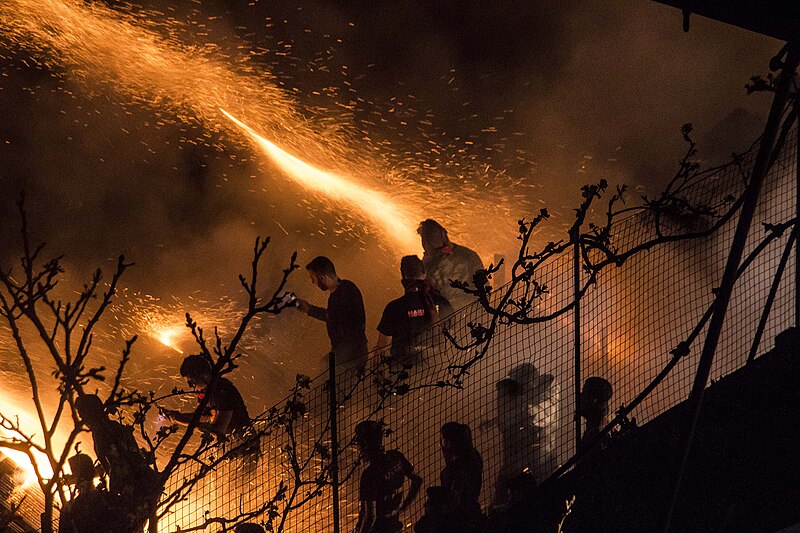
Every Easter, the Greek village of Vrontados on the island of Chios hosts Rouketopolemos, or the “Rocket War,” where two rival churches exchange volleys of homemade rockets. The event symbolizes the rivalry between the two parishes, who aim their rockets at each other’s bell towers. The goal is to hit the opposing church’s bell, creating a thrilling spectacle of lights in the night sky. Although measures are taken to ensure safety, the “war” is intense, drawing large crowds to witness the fiery display. The event is steeped in tradition, with roots dating back to the Ottoman era. Rouketopolemos is both a testament to the village’s history and a visual celebration of Easter. The rockets illuminate the night, symbolizing unity amid rivalry.
Air Guitar World Championships – Oulu, Finland
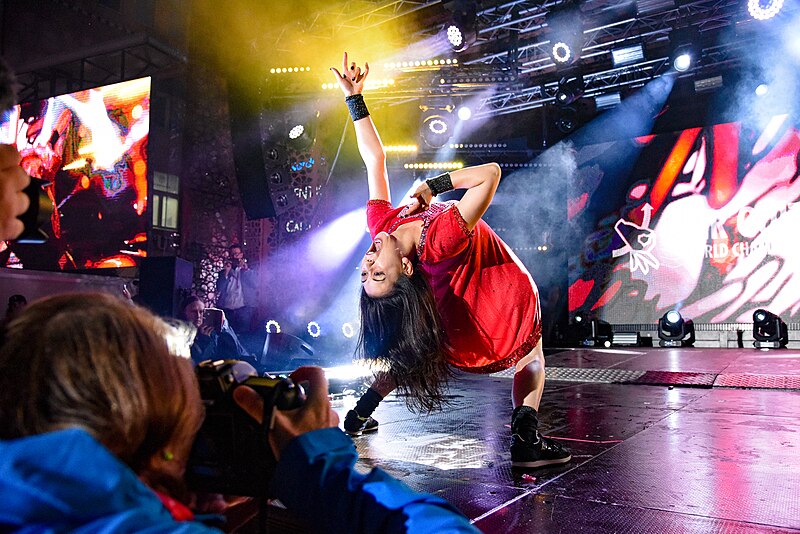
Every August, the Air Guitar World Championships in Oulu, Finland, bring together competitors from all over the world for a rock ‘n’ roll showdown. Participants take the stage to perform air guitar routines, pretending to play intense solos with invisible instruments. Judges evaluate each contestant based on skill, enthusiasm, and stage presence, as if they were real rock stars. Spectators cheer on the performers, who go all out with wild moves and exaggerated facial expressions. The event promotes world peace with the slogan, “Make Air, Not War,” capturing the lighthearted spirit of the festival. Fans gather to enjoy the creativity and passion of these invisible guitarists. The Air Guitar Championships are a testament to the joy of self-expression.
This article originally appeared on Rarest.org.
More From Rarest.Org
Rivers have shaped the geography, culture, and history of the world for centuries. These natural waterways not only support life by providing fresh water and fertile land but also serve as critical transportation routes and sources of power. Read more.
Fashion has always been a powerful form of self-expression, with certain moments leaving an indelible mark on history. From revolutionary designs to bold statements on red carpets, these iconic fashion moments didn’t just reflect trends, they helped shape entire eras. Read more.
Rodents come in all shapes and sizes, but some are far larger than the tiny creatures we typically imagine. From the semi-aquatic capybara to the tree-climbing Brazilian porcupine, these large rodents play vital roles in their ecosystems and exhibit unique behaviors to survive in diverse environments. Read more.


